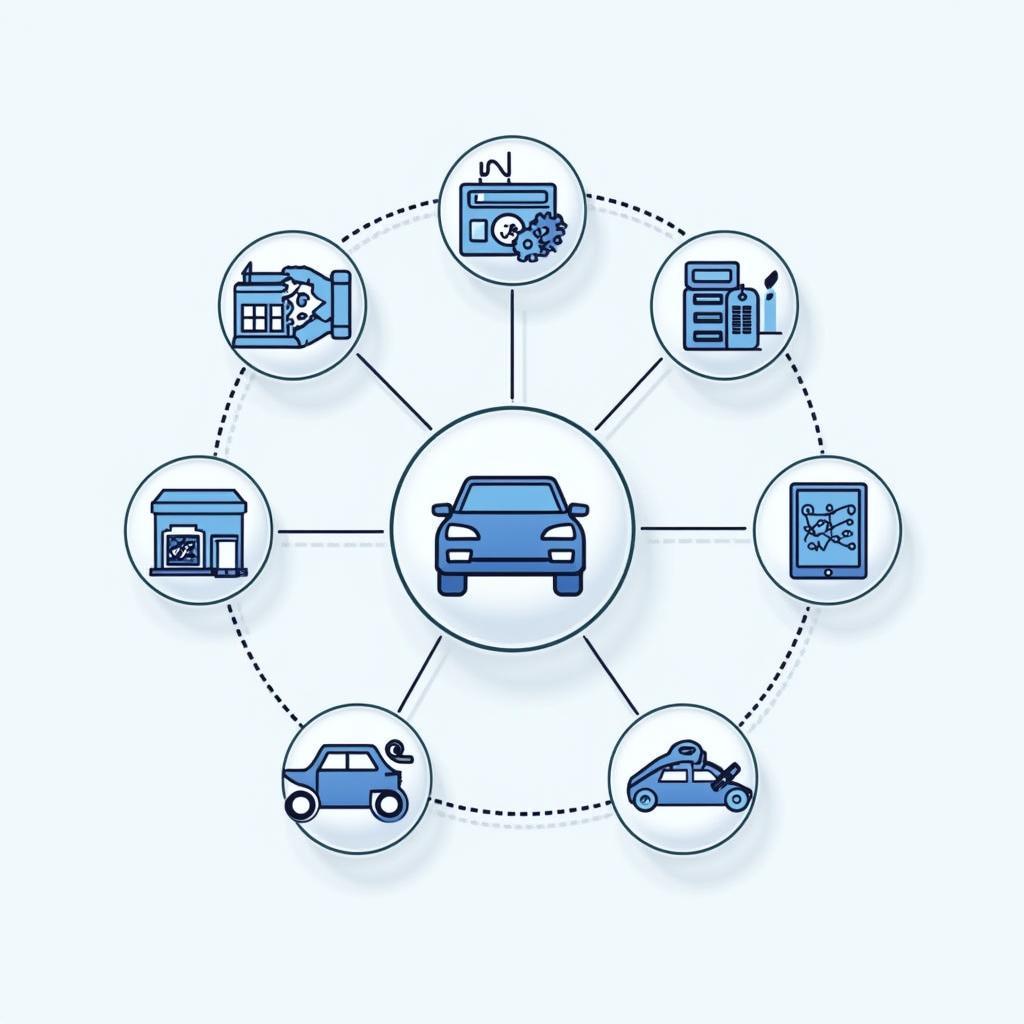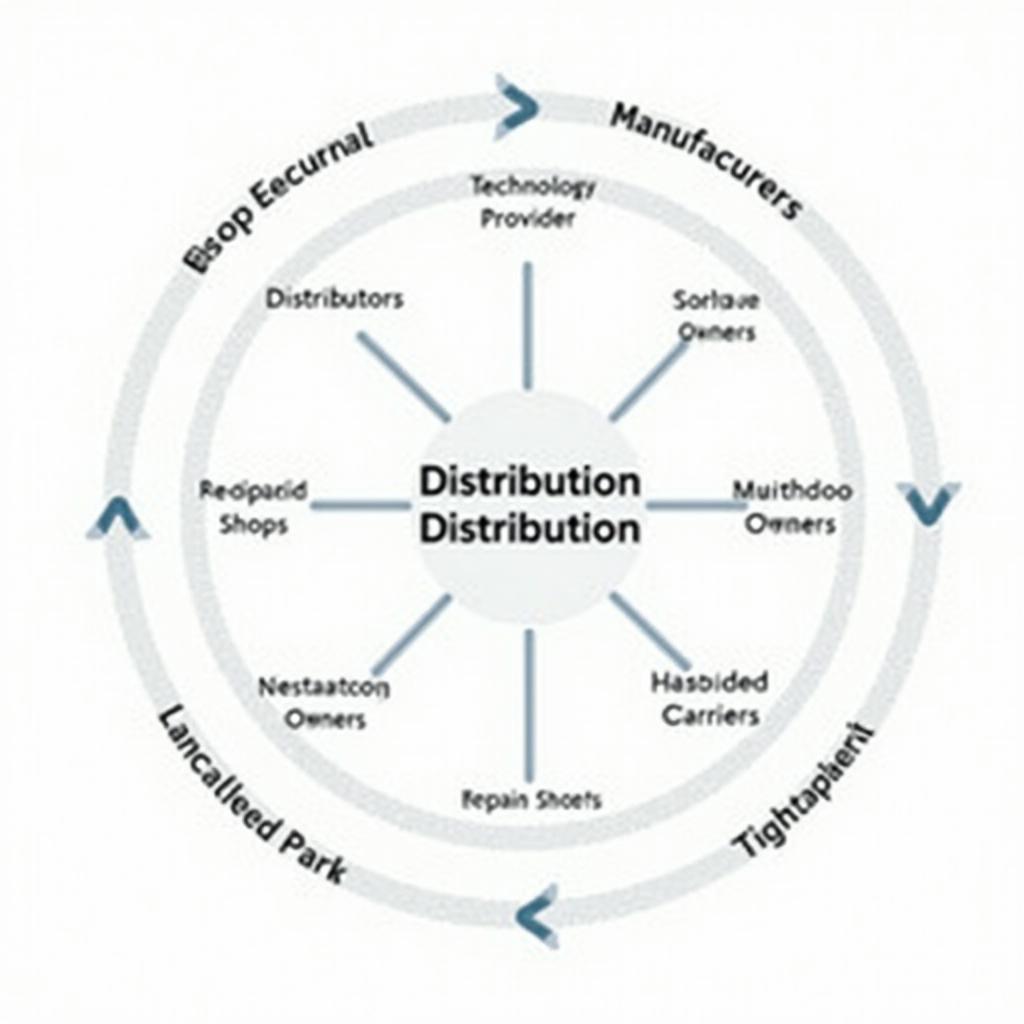The automotive service industry is undergoing a dynamic shift, driven by technological advancements, evolving consumer expectations, and the rise of e-commerce. At the heart of this transformation lies Auto Service Distribution, a multifaceted concept that dictates how parts, services, and information flow within the automotive aftermarket. Understanding auto service distribution is no longer optional – it’s essential for businesses to thrive and for consumers to make informed decisions about their vehicles.
The Evolving Landscape of Auto Service Distribution
Traditionally, auto service distribution followed a linear path: a vehicle owner experienced a problem, took their car to a local mechanic or dealership, and waited for repairs. This model, while straightforward, is becoming increasingly inadequate in today’s fast-paced world. Here’s why:
-
Increased Vehicle Complexity: Modern vehicles are equipped with sophisticated technology, from advanced driver-assistance systems (ADAS) to complex electrical components. This complexity demands specialized knowledge, tools, and parts, which traditional repair shops may not always possess.
-
The Rise of E-commerce: Consumers are accustomed to the convenience of online shopping, and the automotive industry is no exception. From ordering parts online to comparing service quotes, digital platforms are reshaping how vehicle owners approach maintenance and repairs.
-
Data-Driven Decisions: The abundance of data generated by vehicles, repair shops, and online platforms is fueling the growth of data analytics in the automotive aftermarket. This data-driven approach enables more efficient parts distribution, predictive maintenance, and personalized service recommendations.
 The Evolving Landscape of Auto Service Distribution
The Evolving Landscape of Auto Service Distribution
Key Players in the Auto Service Distribution Network
The auto service distribution ecosystem involves a complex interplay of various stakeholders, each playing a crucial role:
-
Manufacturers: Original Equipment Manufacturers (OEMs) are increasingly focusing on expanding their aftermarket presence, offering genuine parts, specialized tools, and training programs to independent repair shops.
-
Distributors: Acting as intermediaries between manufacturers and repair shops, distributors play a vital role in ensuring timely and efficient parts delivery.
-
Repair Shops: From independent garages to specialized service centers and dealerships, repair shops form the frontline of the auto service distribution network.
-
Technology Providers: Software developers and technology companies are creating innovative solutions to optimize every stage of the auto service distribution process, from online booking platforms to diagnostic tools and inventory management systems.
 Key Players in Auto Service Distribution
Key Players in Auto Service Distribution
The Impact of Technology on Auto Service Distribution
Technology is revolutionizing auto service distribution in unprecedented ways:
-
E-commerce Platforms: Online marketplaces connect vehicle owners with a wide range of parts and service providers, offering transparency, convenience, and competitive pricing.
-
Telematics and Predictive Maintenance: Vehicle telematics systems generate real-time data about vehicle health and performance, enabling predictive maintenance and minimizing downtime.
-
Mobile Apps: Mobile applications empower vehicle owners with instant access to service history, maintenance reminders, repair quotes, and roadside assistance.
Benefits of an Optimized Auto Service Distribution System
An efficient auto service distribution system offers significant advantages for all stakeholders:
-
Reduced Downtime: Streamlined parts procurement and efficient service delivery minimize vehicle downtime, saving time and money for both vehicle owners and businesses.
-
Improved Customer Satisfaction: Convenient online platforms, transparent pricing, and personalized service recommendations enhance the overall customer experience.
-
Increased Profitability: Optimized inventory management, reduced logistics costs, and data-driven decision-making contribute to increased profitability for businesses across the auto service supply chain.
 Benefits of an Optimized Auto Service Distribution System
Benefits of an Optimized Auto Service Distribution System
The Future of Auto Service Distribution: Trends to Watch
The auto service distribution landscape is constantly evolving. Here are some key trends to watch:
-
The Rise of Electric Vehicles (EVs): The increasing popularity of EVs will require specialized parts, training, and infrastructure, creating new opportunities and challenges for the aftermarket.
-
The Growing Importance of Data Analytics: Data will play an even more critical role in optimizing parts inventory, predicting maintenance needs, and personalizing service offerings.
-
The Need for Cybersecurity: As vehicles become more connected, ensuring the cybersecurity of the auto service distribution network will be paramount to prevent data breaches and ensure vehicle safety.
Choosing the Right Auto Service Provider in the Digital Age
With the abundance of options available, selecting the right auto service provider can seem daunting. Here are some key factors to consider:
-
Reputation and Reviews: Check online reviews and ratings to gauge the reputation and reliability of different service providers.
-
Transparency and Communication: Choose providers who offer transparent pricing, clear communication, and detailed service explanations.
-
Technology and Expertise: Look for providers who embrace technology, utilize advanced diagnostic tools, and have the expertise to handle the complexities of modern vehicles.
Conclusion
The future of auto service distribution is undeniably intertwined with technology, data, and evolving consumer expectations. By embracing these changes and adapting to the new landscape, businesses can thrive, and vehicle owners can enjoy a more seamless and satisfying service experience. Staying informed about the latest trends and making informed decisions are crucial for navigating the exciting future of auto repair.
FAQs
1. What is the difference between OEM and aftermarket parts?
OEM parts are manufactured by the original vehicle manufacturer, while aftermarket parts are produced by third-party companies. OEM parts are generally more expensive but may offer better quality and compatibility.
2. How can I find a reputable auto service provider near me?
You can use online search engines, check online reviews and ratings, or ask for recommendations from friends, family, or local automotive groups.
3. What should I do if I have a dispute with an auto service provider?
Try to resolve the issue amicably with the service provider first. If that fails, you can contact your local consumer protection agency or consider mediation or legal action.
Need Help Navigating the World of Auto Service?
Contact us today! Our team of experts at AutoServiceEu is here to provide you with the information and resources you need to make informed decisions about your vehicle’s maintenance and repair.
WhatsApp: +1(641)206-8880
Email: [email protected]
We’re available 24/7 to answer your questions and connect you with trusted auto service professionals in your area.

Leave a Reply